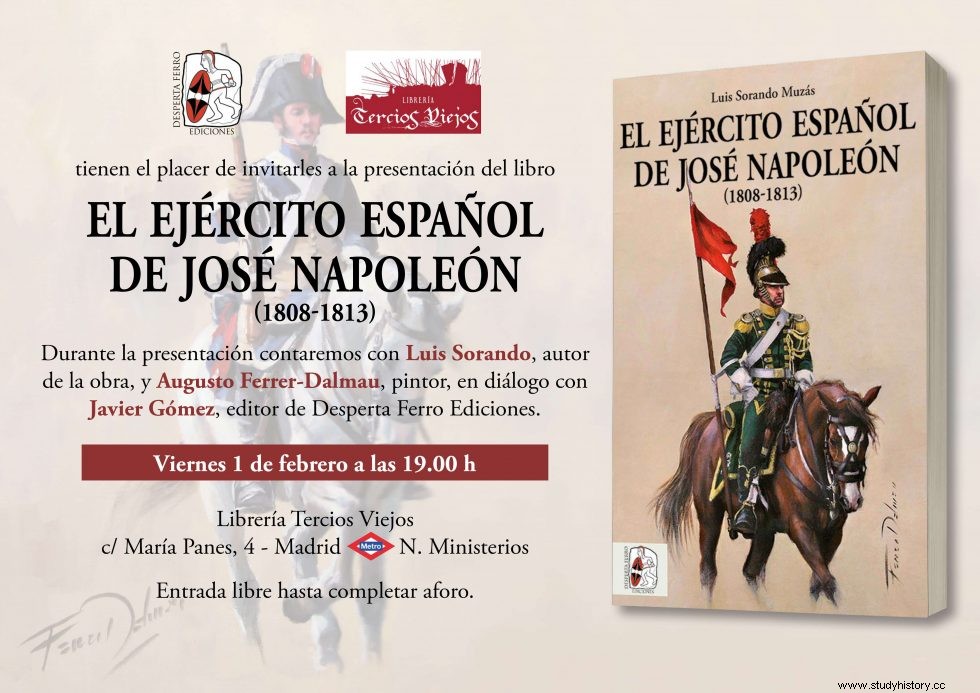
Together with the author, Luis Sorando , we are lucky to have the presence of Augusto Ferrer-Dalmau , painter of battles. The two will engage in a dialogue with Javier Gómez , publisher of Awake Ferro Editions. We are lucky to have the Tercios Viejos bookstore (C/ María Panés 4, 28003 Madrid), whose recent opening took place last December. It is a new space in the capital exclusively dedicated to history and, specifically, to military history
We would like nothing more than to be able to count on your assistance, so we invite you to come so that you can enjoy together with us this fundamental work that is The Spanish Army of Joseph Napoleon about the Spaniards who lost the War of Independence.
«In France they believe that the Spanish regiments are a ferment of rebels and a great expense, but every ruler needs a force…». This is how Minister Azanza justified the creation of an army for José I, without a doubt, the most unknown of all those who participated not only in our War of Independence, but also in the Napoleonic Wars as a whole. The Spanish Army of José Napoleon (1808-1813) is the first rigorous study on it, the result of more than 25 years of research and study in archives and collections inside and outside our country that have allowed its author, Luis Sorando Muzás , reconstruct the records, uniforms and flags of their forgotten units, as well as the biographies of many of their men, victims of distrust on the part of their French allies while hated and despised by their Spanish compatriots, who branded them as jurors and renegades. And so, despite continuous defections and reorganizations, and not always with the approval of the emperor, the small Spanish Army of José Napoleon was taking shape, made up of numerous units:Royal Guard, Spanish infantry, foreign regiments, hunters, lancers and hussars. cavalry, gendarmerie, guides, minions, mountain hunters, urban militias, etc. which will be studied in the different chapters of this work, extensively illustrated with photographs of unpublished pieces and illustrations by prestigious artists, such as Dionisio Cueto or Augusto Ferrer-Dalmau.
